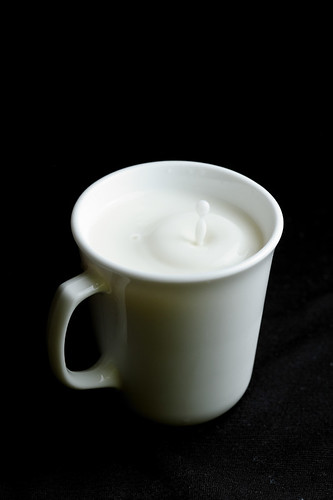
To understand a bit about how flashes can freeze your subject matter, you need to know how flashes operate. Hot shoe flashes or speedlights/speedlites (depending on your brand) use power settings based upon duration of light. Longer duration equals more light in an image and shorter durations will provide less light to an image. Available power and flash duration are very important specifications to understand when attempting this style of photography.
As a general rule, the lowest power setting of your speedlight will be the shortest duration. This is crucial for freezing your subject.
Images in this post were shot through a 16x22" Photoflex softbox to provide the style of light I wanted to achieve. However, using a light modifier, like a soft box or umbrella, will diminish the power output of your light. Therefore, having enough light fall onto the subject without sacrificing any time is absolutely imperative. A simple solution is to cram as many lights inside the modifier as necessary to achieve the proper light output. Leave all your lights on the lowest power/shortest duration. (Tip: If you are using multiple heads in one modifier, try using only one model of flash as variances between brands and products will occur. Flash duration at the same power ratio may be different from one model to the next.)
All shots were captured with Bulb exposure and appropriate apertures for Depth of Field. ISO value was adjusted to compensate for different aperture settings. Two Nikon SB-800's were placed inside the 16x22" box and were triggered by PlusII Pocketwizards. Water drops from a straw created the splashes in the milk and ice cubes were used in the orange juice for a greater displacement of liquid.

A final thought about light contamination. Obviously using any long exposure (in this case, Bulb) the camera will see any spill of light from any other light source. The ambient environment in the shooting room was VERY low to avoid as much unnecessary light as possible from entering the lens. Lens hoods were used to keep lens flare out and the box was feathered away from the camera to avoid any light spill from its face.
Thanks to my assistant Megan.
Hope you enjoyed the quick tutorial. Please drop a note here if you have any questions.
Um, I have a question. Or two. Or twelve. Can you start over? I don't really understand! :) Someday...
ReplyDeleteI feel blessed to have been there so I actually understand what youre saying here.
ReplyDelete(its been about a month since your last (first) post. WE WANT MORE! ;)